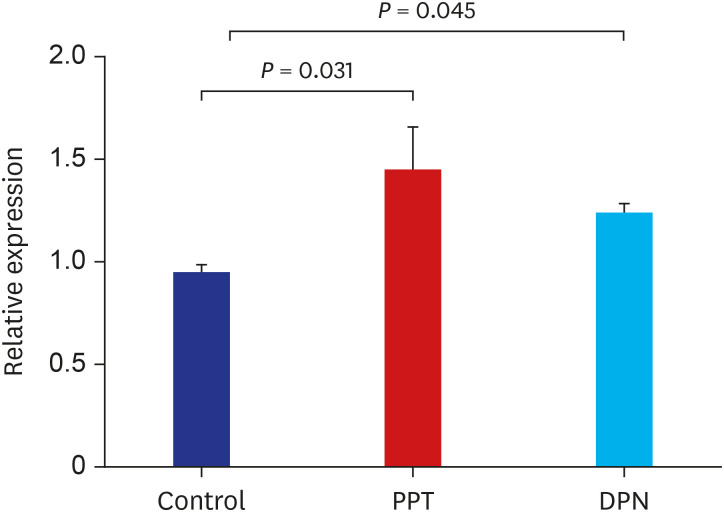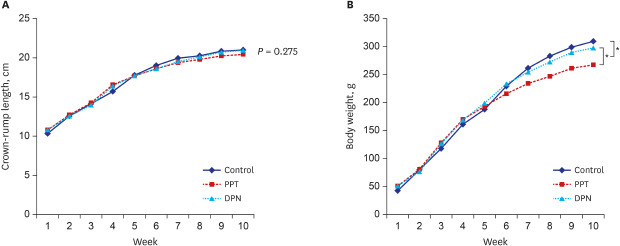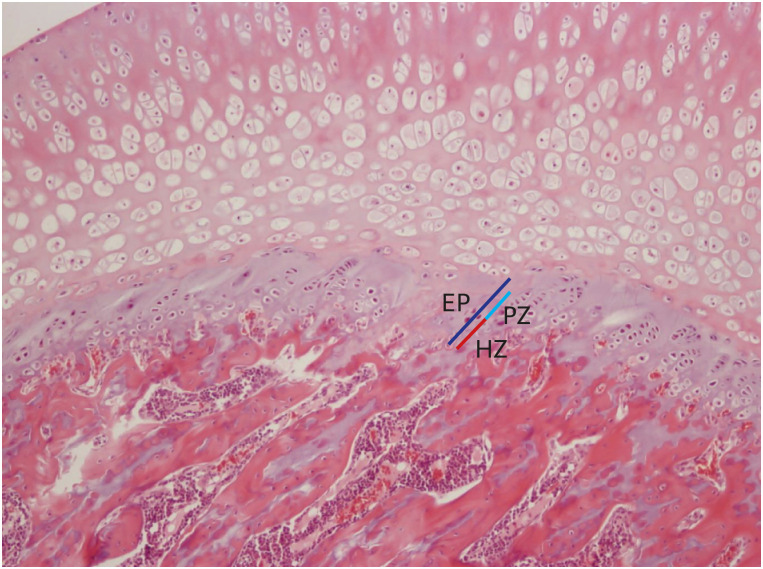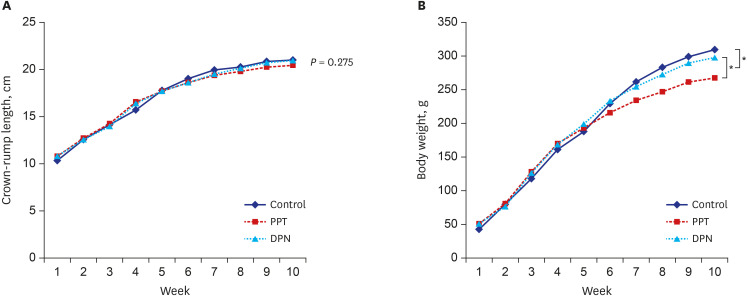1. Styne DM, Grumbach MM. Chapter 24. Puberty: ontogeny, neuroendocrinology, physiology, and disorders. In : Kronenberg HM, Melmed S, Polonsky KS, Larsen PR, editors. Williams Textbook of Endocrinology. 11th ed. Philadelphia, PA: Saunders Co.;2008. p. 969–1166.
2. Krum SA. Direct transcriptional targets of sex steroid hormones in bone. J Cell Biochem. 2011; 112(2):401–408. PMID:
21268060.

3. Emons J, Chagin AS, Sävendahl L, Karperien M, Wit JM. Mechanisms of growth plate maturation and epiphyseal fusion. Horm Res Paediatr. 2011; 75(6):383–391. PMID:
21540578.

4. Nilsson O, Chrysis D, Pajulo O, Boman A, Holst M, Rubinstein J, et al. Localization of estrogen receptors-alpha and -beta and androgen receptor in the human growth plate at different pubertal stages. J Endocrinol. 2003; 177(2):319–326. PMID:
12740020.

5. Stavrou I, Zois C, Chatzikyriakidou A, Georgiou I, Tsatsoulis A. Combined estrogen receptor α and estrogen receptor β genotypes influence the age of menarche. Hum Reprod. 2006; 21(2):554–557. PMID:
16210384.

6. van der Eerden BC, Karperien M, Wit JM. Systemic and local regulation of the growth plate. Endocr Rev. 2003; 24(6):782–801. PMID:
14671005.

7. Carel JC, Léger J. Clinical practice. Precocious puberty. N Engl J Med. 2008; 358(22):2366–2377. PMID:
18509122.
9. Shim KS. The growth and pubertal development in female mice with tissue-specific knock out of estrogen receptor. J Korean Soc Pediatr Endocrinol. 2011; 16(2):67–72.

10. MacGillivray MH, Morishima A, Conte F, Grumbach M, Smith EP. Pediatric endocrinology update: an overview. The essential roles of estrogens in pubertal growth, epiphyseal fusion and bone turnover: lessons from mutations in the genes for aromatase and the estrogen receptor. Horm Res. 1998; 49 Suppl 1:2–8. PMID:
9554463.
11. Kronenberg HM. Developmental regulation of the growth plate. Nature. 2003; 423(6937):332–336. PMID:
12748651.

12. Hiney JK, Ojeda SR, Dees WL. Insulin-like growth factor I: a possible metabolic signal involved in the regulation of female puberty. Neuroendocrinology. 1991; 54(4):420–423. PMID:
1758585.

13. Juul A. The effects of oestrogens on linear bone growth. Hum Reprod Update. 2001; 7(3):303–313. PMID:
11392377.

14. Ohlsson C, Mohan S, Sjögren K, Tivesten A, Isgaard J, Isaksson O, et al. The role of liver-derived insulin-like growth factor-I. Endocr Rev. 2009; 30(5):494–535. PMID:
19589948.

15. Baron J, Klein KO, Yanovski JA, Novosad JA, Bacher JD, Bolander ME, et al. Induction of growth plate cartilage ossification by basic fibroblast growth factor. Endocrinology. 1994; 135(6):2790–2793. PMID:
7988472.

16. Bord S, Horner A, Beavan S, Compston J. Estrogen receptors α and β are differentially expressed in developing human bone. J Clin Endocrinol Metab. 2001; 86(5):2309–2314. PMID:
11344243.

17. Ohlsson C, Engdahl C, Börjesson AE, Windahl SH, Studer E, Westberg L, et al. Estrogen receptor-α expression in neuronal cells affects bone mass. Proc Natl Acad Sci U S A. 2012; 109(3):983–988. PMID:
22215598.

18. Börjesson AE, Lagerquist MK, Liu C, Shao R, Windahl SH, Karlsson C, et al. The role of estrogen receptor α in growth plate cartilage for longitudinal bone growth. J Bone Miner Res. 2010; 25(12):2690–2700. PMID:
20564247.

19. Weise M, De-Levi S, Barnes KM, Gafni RI, Abad V, Baron J. Effects of estrogen on growth plate senescence and epiphyseal fusion. Proc Natl Acad Sci U S A. 2001; 98(12):6871–6876. PMID:
11381135.

20. Zhao C, Dahlman-Wright K, Gustafsson JA. Estrogen receptor β: an overview and update. Nucl Recept Signal. 2008; 6(1):e003. PMID:
18301783.

21. Börjesson AE, Lagerquist MK, Windahl SH, Ohlsson C. The role of estrogen receptor α in the regulation of bone and growth plate cartilage. Cell Mol Life Sci. 2013; 70(21):4023–4037. PMID:
23516016.

22. Chagin AS, Sävendahl L. Oestrogen receptors and linear bone growth. Acta Paediatr. 2007; 96(9):1275–1279. PMID:
17718780.

23. Stauffer SR, Coletta CJ, Tedesco R, Nishiguchi G, Carlson K, Sun J, et al. Pyrazole ligands: structure-affinity/activity relationships and estrogen receptor-α-selective agonists. J Med Chem. 2000; 43(26):4934–4947. PMID:
11150164.

24. Kraichely DM, Sun J, Katzenellenbogen JA, Katzenellenbogen BS. Conformational changes and coactivator recruitment by novel ligands for estrogen receptor-α and estrogen receptor-β: correlations with biological character and distinct differences among SRC coactivator family members. Endocrinology. 2000; 141(10):3534–3545. PMID:
11014206.

25. Frasor J, Barnett DH, Danes JM, Hess R, Parlow AF, Katzenellenbogen BS. Response-specific and ligand dose-dependent modulation of estrogen receptor (ER) α activity by ERβ in the uterus. Endocrinology. 2003; 144(7):3159–3166. PMID:
12810572.

26. Meyers MJ, Sun J, Carlson KE, Marriner GA, Katzenellenbogen BS, Katzenellenbogen JA. Estrogen receptor-β potency-selective ligands: structure-activity relationship studies of diarylpropionitriles and their acetylene and polar analogues. J Med Chem. 2001; 44(24):4230–4251. PMID:
11708925.

27. Butler MJ, Hildebrandt RP, Eckel LA. Selective activation of estrogen receptors, ERα and GPER-1, rapidly decreases food intake in female rats. Horm Behav. 2018; 103:54–61. PMID:
29807036.

28. Heine PA, Taylor JA, Iwamoto GA, Lubahn DB, Cooke PS. Increased adipose tissue in male and female estrogen receptor-alpha knockout mice. Proc Natl Acad Sci U S A. 2000; 97(23):12729–12734. PMID:
11070086.

29. Avtanski D, Novaira HJ, Wu S, Romero CJ, Kineman R, Luque RM, et al. Both estrogen receptor α and β stimulate pituitary GH gene expression. Mol Endocrinol. 2014; 28(1):40–52. PMID:
24284820.

30. Khalid AB, Krum SA. Estrogen receptors alpha and beta in bone. Bone. 2016; 87:130–135. PMID:
27072516.

31. Lindberg MK, Weihua Z, Andersson N, Movérare S, Gao H, Vidal O, et al. Estrogen receptor specificity for the effects of estrogen in ovariectomized mice. J Endocrinol. 2002; 174(2):167–178. PMID:
12176656.

32. Hertrampf T, Schleipen B, Velders M, Laudenbach U, Fritzemeier KH, Diel P. Estrogen receptor subtype-specific effects on markers of bone homeostasis. Mol Cell Endocrinol. 2008; 291(1-2):104–108. PMID:
18433985.

33. Chagin AS, Lindberg MK, Andersson N, Moverare S, Gustafsson JA, Sävendahl L, et al. Estrogen receptor-β inhibits skeletal growth and has the capacity to mediate growth plate fusion in female mice. J Bone Miner Res. 2004; 19(1):72–77. PMID:
14753739.

34. Iravani M, Lagerquist M, Ohlsson C, Sävendahl L. Regulation of bone growth via ligand-specific activation of estrogen receptor alpha. J Endocrinol. 2017; 232(3):403–410. PMID:
27999091.









 PDF
PDF Citation
Citation Print
Print






 XML Download
XML Download